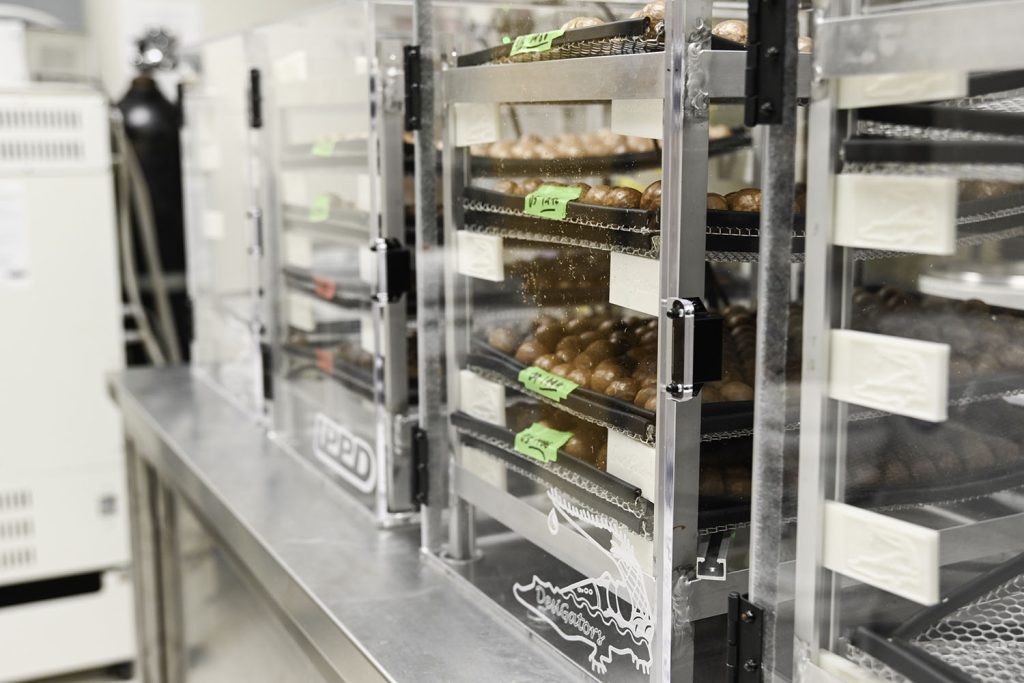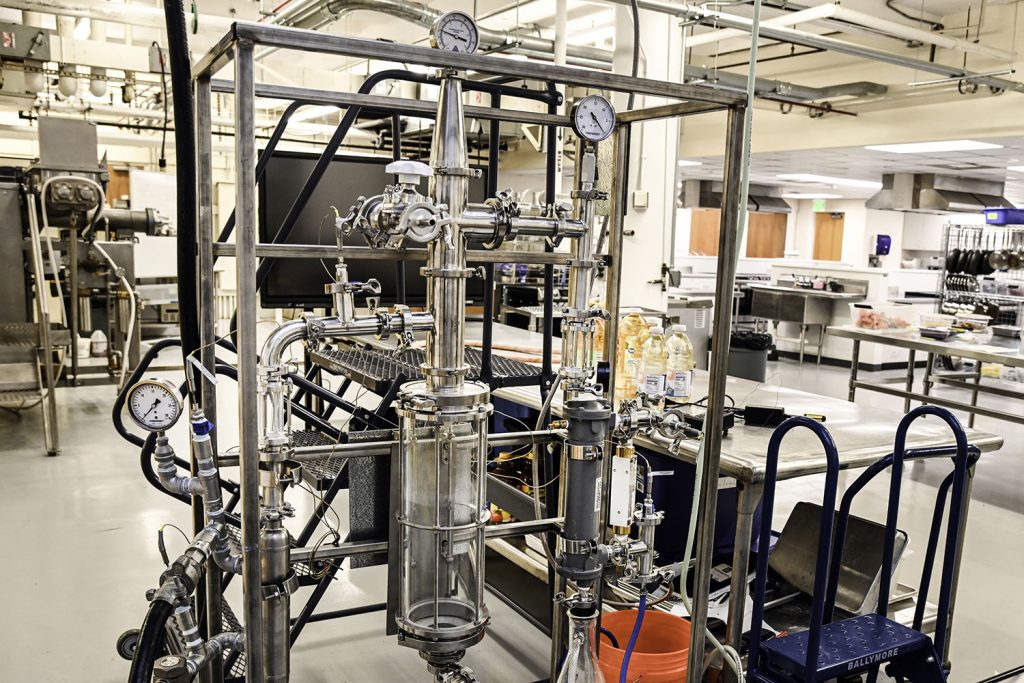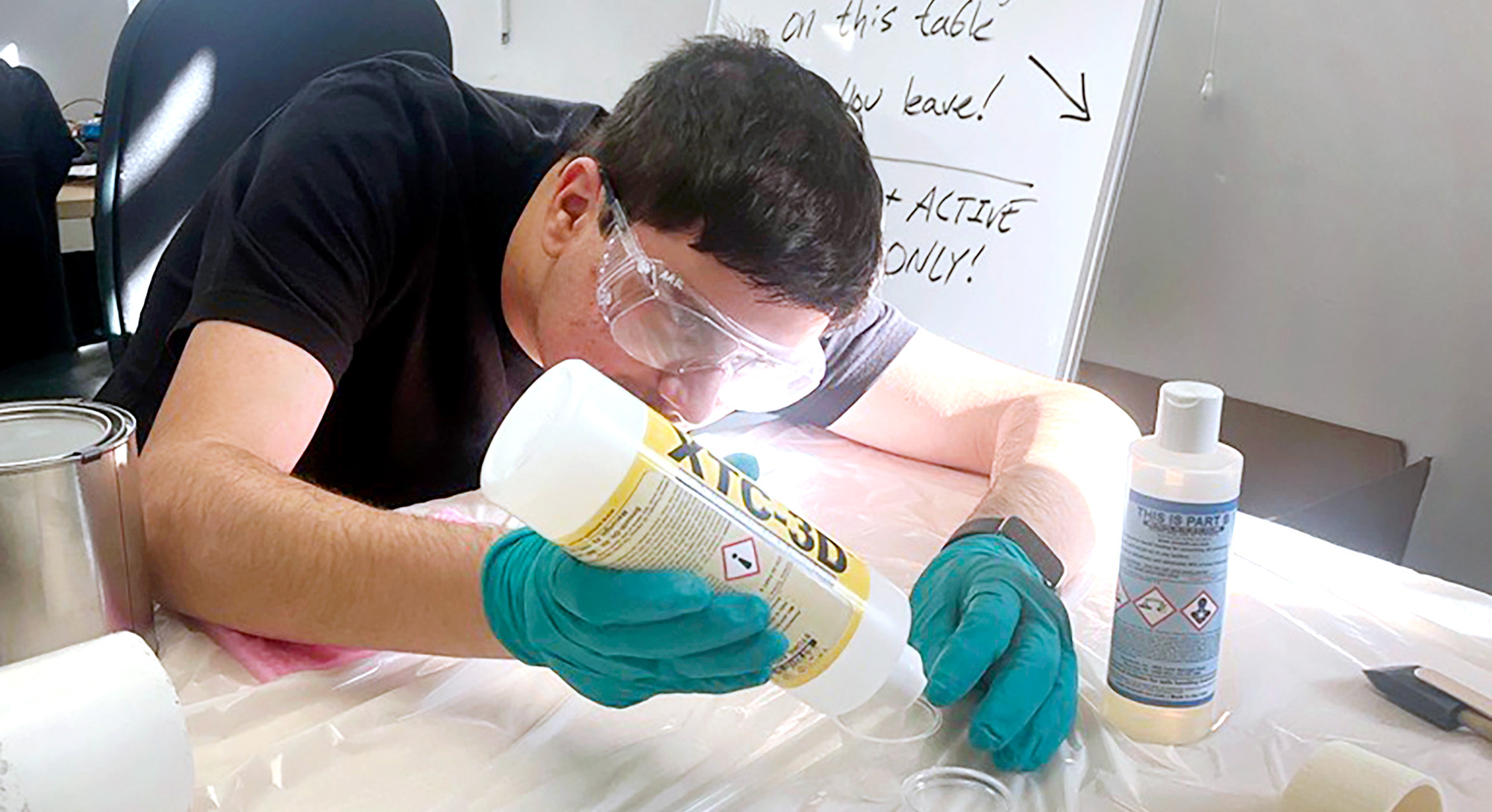UF’s IPPD celebrates 30 years of solving problems with products
Andrew MacIntosh had a food problem. A big one.
An assistant professor for the University of Florida’s Food Science and Human Nutrition Department (FSHND), he needed a large food evaporator as an in-service teaching tool. But the one in his lab was old, small and not up to the task.
So, he turned to engineering students in the experiential-learning program Integrated Product and Process Design (IPPD) in the Department of Engineering Education (EEd). In two semesters starting in 2022, MacIntosh, team coach Philip Jackson, Ph.D., and those students built – under cost and with advanced features – a pitch-perfect evaporator that remains in service today in his lab.

The following year, MacIntosh needed an advanced food desiccator for preserving moisture-sensitive items in the lab. He again turned to IPPD, where he partnered with engineering students to build the perfect machine cheaper and more advanced than anything on the market.
UF’s growing IPPD program has been solving industry problems for 30 years – two semesters at a time. As the program celebrates three decades this year, it is enjoying substantial growth, success and tall orders from industry sponsors seeking solutions.
Since 1994, about 3,500 students created more than 600 projects. IPPD has produced patents, trade secrets and countless innovations for its sponsors, as well as numerous job opportunities for its students, including offers from the team sponsors.
“IPPD is all about bringing industry into the classroom,” said Edward Latorre-Navarro, IPPD director and associate engineer with EEd. “We have industries that sponsor the program, and as part of their sponsorship, they bring in real-world problems.”
IPPD students plunge into cross-disciplinary projects, learn from each other, hone presentation skills, and connect with companies and industry leaders, some of whom are so impressed they offer jobs for IPPD students.
“The students have to go through the process of understanding the problem, researching potential solutions, designing their own proposal, building, testing and delivering it for the sponsors by the end of the year,” Latorre-Navarro said.
In some cases, the students work with non-industry sponsors. MacIntosh’s equipment is an example, as are projects for the Cade Museum, UF’s Harn Museum of Art and UF Health.
The DesiGators, the IPPD team that made the desiccator, won top honors at last year’s Capstone Design Conference in Knoxville, Tenn., for the design and deliverable. The desiccator remains in full service in MacIntosh’s lab.


The DesiGators quadrupled the capacity of a normal desiccator and were able to implement additional features such as air heating, air pressure regulation, air flow regulation, and the ability to run multiple experiments.
“We understood what we needed to do, and we just did it,” said DesiGator team leader Alex Weaver, a UF graduate working for MERCK in North Carolina.
“It’s a win-win scenario because it only costs a little bit of money for the raw materials in order to build this,” MacIntosh added. “But the magnitude is different than if I was going to go pay another company to do it. Quite frankly, if I paid for it, I wouldn’t have gotten everything that I got. Just the overall quality of product exceeded my expectations.”
Problem solved with thousands of dollars saved.
“The quality of the projects that we’re doing is what makes these sponsors come back year to year,” Latorre-Navarro said.
IPPD is upping the ante on quality this year, as it will accept graduate students starting in the fall. Two new master’s programs that will be integrated into IPPD: Artificial Intelligence Systems and Applied Data Science.
“That’s one big area where we’re evolving,” Latorre-Navarro said of the IPPD graduate students. “Their preparation is at a higher level, so the difficulty of the projects and expectations can be increased.”
Last year, 17 undergraduate teams – including the DesiGators – tackled projects such as an AI intelligence generator for apparel company Fanatics, a traffic safety device for roadside utility workers for Florida Power & Light Co., and drones to inspect telecommunications towers for Verizon.
Then there are Mac and Pinky.
These are AI-powered animatronic birds designed to engage with guests at the historic Pinecrest Gardens in South Florida. Mac is modeled after a macaw, and Pinky is modeled after a beloved cockatoo that used to perform at the park when it showcased exotic birds.
“They will be used to provide an oral history of the site, to engage with guests,” said Lacey Bray, the park’s educational program coordinator.
They will use AI algorithms to interact with guests.
“Students continued working on this project during that summer (2024), after having completed the course and receiving the grade, only because of their personal commitment to delivering a finished project that would exceed expectations,” Latorre-Navarro noted.
While IPPD founder Heinz K. Fridrich may not have envisioned chatty AI-powered birds as curriculum, he certainly designed the program for diverse projects. A longtime IBM executive, Fridrich launched IPPD in 1994, with Keith Stanfill, Ph.D., picking up the reigns until 2018. Rodney Guico, Ph.D., served as director until Latorre-Navarro took over in 2019.
Upon starting IPPD, Fridrich analyzed 80 engineering design programs for students and engaged with 20 private companies for an eight-month program.
“Drawing in engineers from all the different disciplines is a huge advantage that I haven’t seen at every other university,” MacIntosh said. “I hope that they’re able to continue to tout some of the products they create because having students at the top of their game from different disciplines provided me more options than I thought I was going to have.”
In April, IPPD will celebrate 30 years of success and growth at the Reitz Union Ballroom, with Stanfill as a keynote speaker. The first part of the day will be for IPPD students presenting their final design reviews. IPPD is inviting the public to attend starting at 5 p.m. to view the designs and discuss them with the students.

